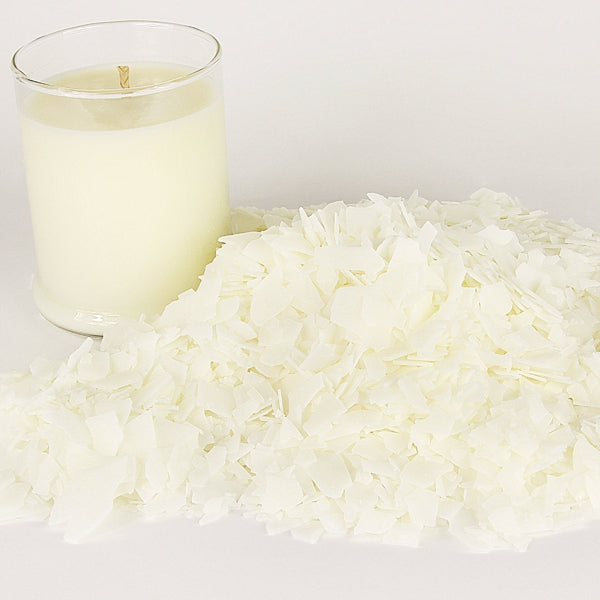Instill Your Home with the Aroma of Crystal Soy Candles and Home Fragrance
Wiki Article
From Wick to Wax: Understanding the Chemistry Behind Soy Wax Candles and Their Environmental Effect
As we illuminate our rooms with the warm glow of candle lights, there exists a realm of detailed chemistry behind the seemingly simple act of lighting a soy wax candle light. The option between soy and paraffin wax expands beyond mere aesthetics, delving into the realm of environmental influence and the extremely composition of the materials. Recognizing the molecular structure of soy wax and its burning procedure clarifies the exhausts released right into our surroundings. Join us as we untangle the clinical details behind soy wax candles and explore their implications on our atmosphere.Soy Wax Vs. Paraffin Wax
When comparing soy wax and paraffin wax for candle light production, it is vital to recognize the unique characteristics and benefits of each material. Soy wax is a natural, renewable source originated from soybean oil, making it eco-friendly and environmentally friendly - candles. In comparison, paraffin wax is a result of petroleum refining, which elevates problems concerning its ecological impact and sustainabilitySoy wax candle lights melt cleaner and emit less residue compared to paraffin wax candles, making them a healthier selection for interior air high quality. Furthermore, soy wax has a lower melting point, permitting a longer-lasting candle light that spreads fragrance better. Paraffin wax, on the other hand, often tends to burn faster and less cleanly, potentially launching unsafe chemicals into the air.
From a sustainability point of view, soy wax is favored for its biodegradability and renewable sourcing, aligning with the growing consumer preference for eco conscious items. While paraffin wax has been a traditional selection in candle light making due to its price and convenience of use, the change towards environment-friendly choices like soy wax is gaining momentum in the market.
Chemical Make-up of Soy Wax

Burning Process in Soy Candles
The chemical structure of soy wax directly influences the combustion procedure in soy candles, impacting aspects such as shed time, aroma release, and ecological impact. When a soy candle is lit, the heat from the fire melts the wax near the wick.
The burning efficiency of soy candles is affected by the pureness of the soy wax and the high quality of the wick. Furthermore, soy wax candles have a lower ecological influence contrasted to paraffin candles due to their eco-friendly and eco-friendly nature.

Ecological Benefits of Soy Wax

Taken into consideration a sustainable alternative to traditional paraffin wax, soy wax uses noteworthy environmental benefits that make it a popular option among eco-conscious consumers. Soy wax burns cleaner and creates less residue than paraffin wax, adding to much better indoor air high quality and lowering the demand for cleaning and maintenance. Overall, the environmental benefits of soy wax straighten with the growing need for sustainable and environment-friendly items in the market.
Recycling and Disposal Factors To Consider
Recycling and appropriate disposal of soy wax candles play an essential duty in preserving environmental sustainability and decreasing waste in communities and households. When it comes to reusing soy wax candles, the very first step is to make certain that the candle light has burned totally.
In regards to disposal, if recycling is not an option, soy wax candles are naturally degradable and can be securely taken care of in many household waste systems. It is always recommended to examine with local recycling centers or waste management services for particular standards on candle light disposal to guarantee proper handling soy wax candles and environmental security.
Verdict
In verdict, the chemistry behind soy wax candle lights reveals their environmental advantages over paraffin wax candles. Soy wax, obtained from soybean oil, burns cleaner and produces less soot when compared to paraffin wax.When contrasting soy wax and paraffin wax for candle making, it is crucial to understand the distinctive attributes and benefits of each material (soy wax candles).Soy wax candle lights shed cleaner and give off much less residue compared to paraffin wax candles, making them a healthier choice for indoor air quality.Considered a sustainable alternative to traditional paraffin wax, soy wax supplies notable environmental advantages that make it a popular choice among eco-conscious consumers. Soy wax burns cleaner and produces much less residue than paraffin wax, contributing to much better interior air high quality and decreasing the requirement for cleaning and upkeep.In final thought, the chemistry behind soy wax candles discloses their environmental advantages over paraffin wax candle lights
Report this wiki page